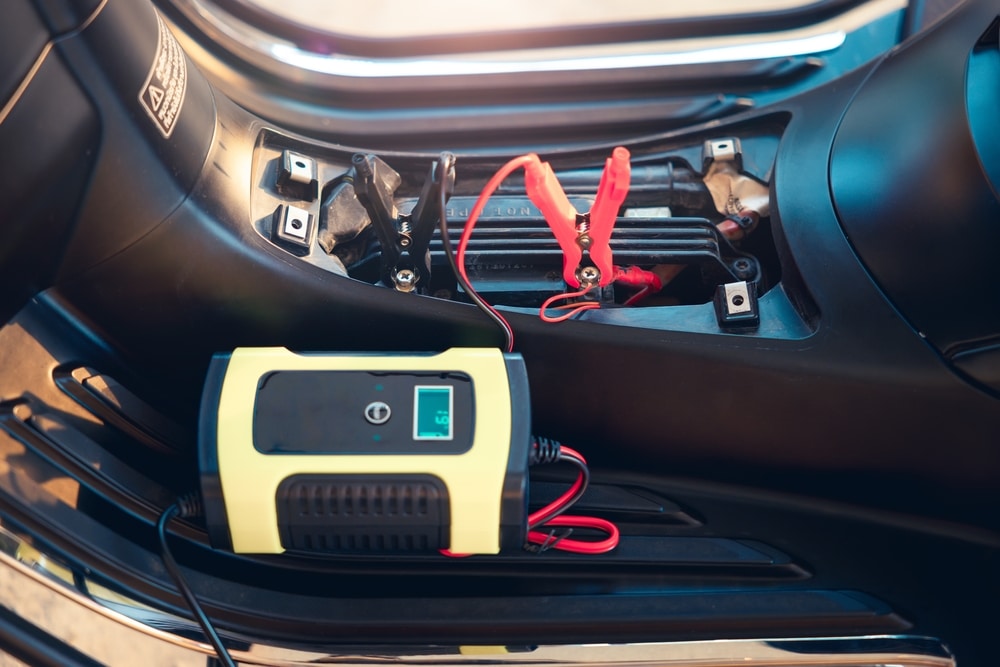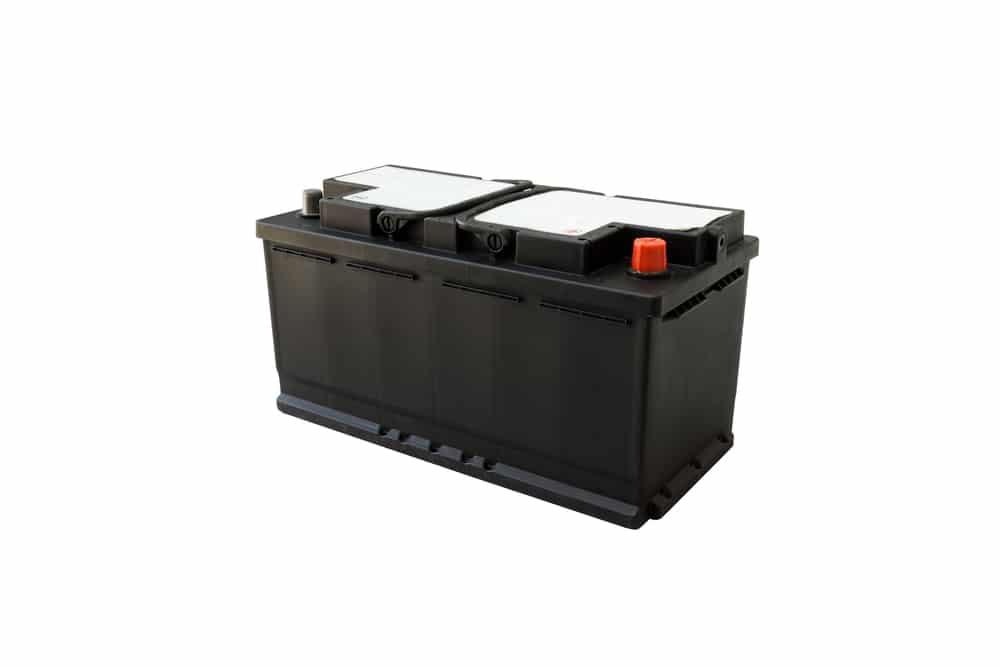Table of Contents
It’s time to unlock unparalleled performance and durability in your batteries. Whenever we talk about these powerhouses, AGM (Absorbent Glass Mat) batteries are something sure to draw your attention due to their versatility. Not only do they work with various vehicles, but their maintenance-free design and peak performance deem them outstanding among different battery types. However, you need sufficient charging if you want to experience an uninterrupted journey. So, in this article guide, we will cover the nuances and intricacies of how to charge an AGM battery. Get ready to fuel your journey!
What are AGM Batteries?

AGM batteries are a type of lead-acid battery that uses fiberglass mats to absorb the liquid electrolyte. This design makes them spill-proof, vibration-resistant, and capable of delivering high bursts of power. Besides, AGM batteries require careful handling and specific AGM battery charger protocols to avoid damage.
Key Characteristics
The AGM batteries are known to pose several key characteristics that make them stand out from the typical battery models.
- Voltage Range: Typically, 12V. When fully charged, an AGM battery is usually between 12.8V and 13.0V.
- Capacity: Measured in amp-hours (Ah).
- Charging Efficiency: AGM batteries charge faster than traditional flooded lead acid batteries.
- Temperature Sensitivity: AGM batteries perform well in a range of temperatures but should not be exposed to extreme heat or cold for prolonged periods.
Gathering the Necessary Tools
Before you begin charging the battery, make sure you have the following equipment:
- Smart Charger: A battery charger designed specifically for AGM batteries. Look for chargers with multi-stage charging capabilities, as these are essential for AGM batteries.
- Battery Tester: To check the battery’s voltage before and after charging.
- Protective Gear: Gloves and safety glasses to protect against potential acid exposure or sparks.
- Clean Workspace: Ensure the area is clean, dry, and well-ventilated.
Preparing the AGM Battery for Charging

Before connecting the battery to the charger, there are a few preparatory steps:
- Inspect the Battery: Check for any visible damage, such as cracks or leaks. If the AGM battery is damaged, do not attempt to charge an AGM.
- Clean the Terminals: Use a wire brush to clean any corrosion from the battery terminals. Corrosion can impede the charging process.
- Check the Voltage: Use a battery tester to measure the voltage. A fully discharged AGM battery typically reads around 10.5V, while a fully charged battery reads around 12.8V to 13.0V.
Choosing the Correct Charger Settings
Using the right settings on your charger is essential for safely and efficiently charging an AGM battery:
- Voltage Setting: Set the charger to 12V, which is standard for most AGM batteries. This step is important to charge an AGM battery.
- Charging Rate (Amps): Select a charging rate that is appropriate for your battery’s capacity. A general rule is to charge at a rate of 10-20% of the battery’s amp-hour rating. For example, a 100Ah battery should be charged at 10-20 amps.
- Mode Selection: If your charger has an AGM mode, select it. This model is specifically designed to accommodate the charging needs of AGM batteries.
Connect the Charger to the Battery
Follow these steps to connect your charger safely:
- Attach the Positive Cable: Connect the positive (red) cable from the charger to the battery’s positive terminal.
- Attach the Negative Cable: Connect the negative (black) cable from the charger to the negative terminal of the battery.
- Double-check connections: Ensure that the cables are securely attached and that there are no loose connections.
Starting the Charging Process
Once everything is connected, you can begin charging the AGM battery:
- Turn on the Charger: Power on the charger and monitor the display to ensure it’s operating correctly.
- Monitor the Charging Process: Keep an eye on the charger’s display and the battery’s voltage. A smart AGM charger will go through several stages, including bulk charging, absorption, and float charging.
- Avoid Overcharging: AGM batteries can be damaged by overcharging. A smart charger with an automatic shut-off feature is ideal to prevent this.
Final Checks
Once the charging process is complete, perform the following steps:
- Check the Final Voltage: After the charger indicates that the battery is fully charged, use a battery tester to confirm that the voltage is within the optimal range (12.8V to 13.0V).
- Disconnect the Charger: Turn off the charger before disconnecting the cables. Remove the negative (black) cable first, followed by the positive (red) cable.
- Inspect the Battery: Once again, check for any signs of damage or overheating. The battery should be cool to the touch.
Maintenance Tips for AGM Batteries

Proper maintenance can extend the life of your AGM battery:
- Regular Charging: Don’t let the battery sit discharged for long periods. Regularly check the voltage and charge the battery when it drops below 12.5V.
- Temperature Control: Store the battery in a cool, dry place. Extreme temperatures can reduce the battery’s lifespan.
- Avoid Deep Discharges: While AGM batteries can handle deep discharges better than deep cycle batteries, it’s best to avoid draining them below 50% of their capacity whenever possible.
Troubleshooting Common Issues
If you encounter problems when you decide to charge an AGM battery, consider the following:
- Battery Won’t Charge: Ensure the charger is set to the correct voltage and mode. If the battery’s voltage is extremely low, you may need a special recovery charger.
- Overheating: If the battery becomes excessively hot during charging, disconnect the charger immediately. This could indicate a problem with the battery or charger.
- Sulfation: If your battery isn’t holding a charge, it may have developed sulfation. Some smart AGM chargers have a desulfation mode to address this issue.
AGM Battery Charging in 2024 – What’s New?

As technology advances, so do battery chargers and maintenance techniques. In 2024, you can see:
- Smart Chargers: More precise charging algorithms and real-time monitoring capabilities.
- Wireless Monitoring: Bluetooth-enabled chargers that allow you to monitor the charging process from your smartphone.
- Eco-Friendly Options: Chargers are designed to be more energy-efficient and environmentally friendly.
However, if you want different options for AGM batteries, check out this page.
Final Words
Coming to the end of this discussion, the article covered details on AGM battery charging. Folks, you all know that properly charging an AGM battery is essential for maintaining its performance and extending its battery life. By following the steps outlined in this guide, you can make sure that your AGM battery remains in peak condition for years to come. Whether you’re charging a battery for a vehicle, boat, or off-grid application, the key is to use the right equipment and follow the correct procedures.
